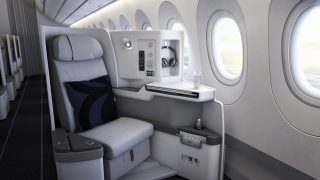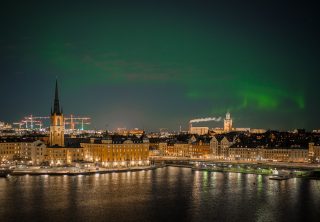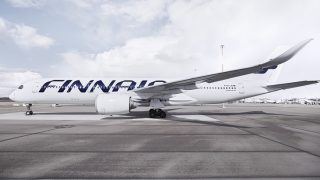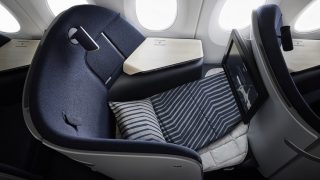Finnair’s free stopover program is pitching Helsinki as the perfect place to break a trip between Asia and Europe. But as an extended layover on Finland’s southern coast attests, this Scandinavian country is a destination unto itself.
Last October, ahead of this year’s centenary of Finnish independence, Finnair made Singapore its 13th Asian destination with daily services to and from Helsinki. As on its Hong Kong and Bangkok routes, the airline uses new-generation Airbus A350s, with roomy seats, the latest
onboard technology, Marimekko-designed toiletry kits, and Northern Lights–inspired mood lighting. And with a flight time of about 11 hours and 30 minutes, it’s also billed as the fastest way to get between Singapore and Europe, pairing well with efficient layovers in Helsinki for connections to major hubs like London, Paris, and Amsterdam. Travelers looking to extend their next European vacation have an even more persuasive incentive in the form of Finnair’s free stopover program, which gives passengers flying via Helsinki the option of spending up to five days in Finland at no extra cost. And there’s a lot to see. Read on for just one way to make the most of a four-night sojourn.
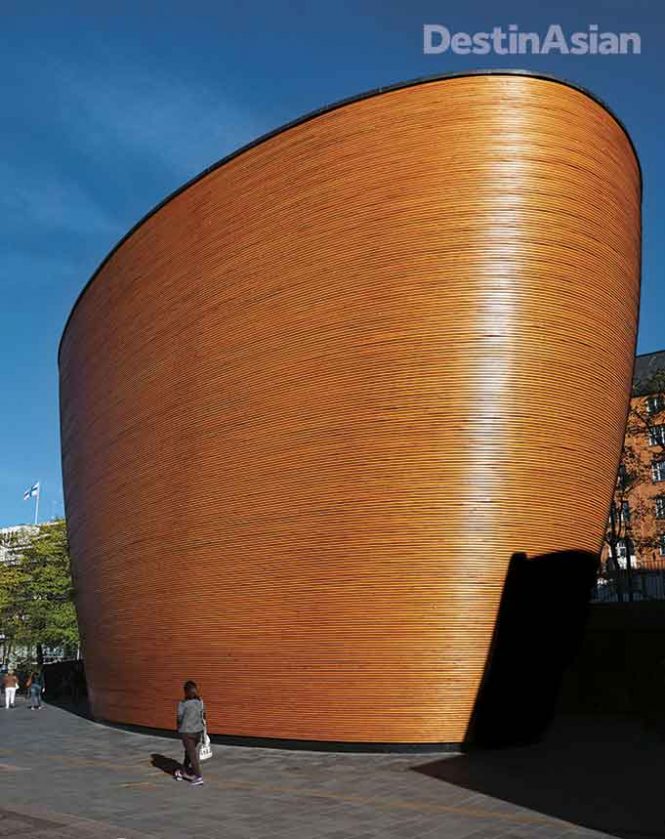
The Kamppi Chapel, in central Helsinki’s Narinkka Square. All photos by Christopher P. Hill.
HELSINKI
Your first stop after disembarking the airport train at Helsinki Central Railway Station? Klaus K (358-20/770-4700; doubles from US$270), a buzzy hotel with interiors inspired by the Kalevala, Finland’s national epic. Situated on the edge of the Design District and a short walk from historic Esplanadi Park, it’s an ideal base for a couple nights’ stay.
A relatively young capital by European standards, Helsinki packs a lot of building styles—neoclassical, art nouveau, Nordic classicism, functionalist, postmodern—into its compact and eminently walkable downtown area, making an architectural tour the first order of the day. Within a six-block radius of the hotel alone, look for the Alvar Aalto–designed Academic Bookstore, the green-domed Helsinki Cathedral, and the Chapel of Silence, a curvaceous timber refuge in Narinkka Square built as part of the city’s 2012 World Design Capital program.

Overlooking the year-old Allas Sea Pool in Helsinki’s South Harbor.
Down by the harbor, poke around the tented kiosks at Market Square (reindeer pelts, Sami handicrafts, and cloudberry preserves are among the offerings) before ducking into the Old Market Hall for lunch. Filled with bakers, wine merchants, cheese shops, and deli outlets, the 19th-century brick building is also home to Story (358-10/666-8458), an airy Nordic café serving toothsome classics like creamy lohikeitto (salmon soup).
Next, do what the Finns do and head to a sauna. Try Löyly (358-9/6128-6550), an angular seaside structure clad in wooden slats that opened last year in the former industrial area of Hernesaari. Facilities here include a traditional smoke sauna and an overwater deck from which you can slip into the chilly Baltic Sea.
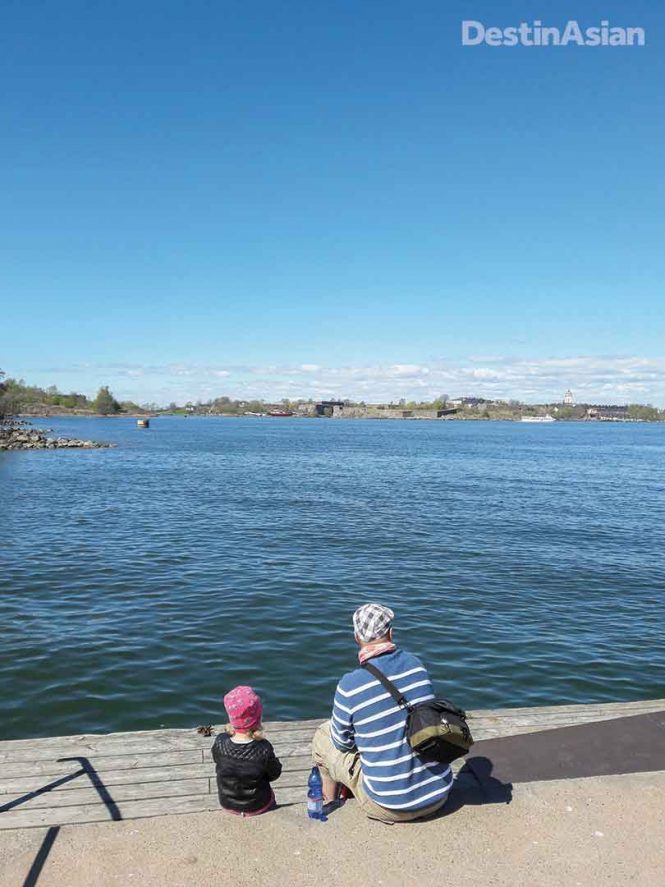
Waiting for the waterbus on Vallisaari, one of the many islands off Helsinki.
Hop on a tram back into town for a drink at the Solo Sokos Hotel Torni’s rooftop Ateljee Bar (358-20/123-4604). Accessed via a spiral staircase, it serves up strong mojitos and an all-encompassing view over Helsinki.
On day two, start the morning with the local-leaning breakfast buffet at Klaus K (think smoked trout and vendace, mushroom-and-apple salad, sourdough flatbread, barley porridge) before returning to the harbor for an island-hopping tour with water-bus operator JT-Line. There are more than 300 islands in the Helsinki Archipelago, some of which have only recently been open to the public, like Vallisaari, a former munitions depot turned park with walking trails that take you past meadows, forests, and long-abandoned bunkers and artillery batteries. Across a narrow channel is Suomenlinna, an 18th-century island fortress and UNESCO World Heritage site. Attractions include huge granite ramparts, cannon emplacements, one of the oldest operational dry docks in Europe, and the studios of resident artisans.
When the tourist throngs become too much, hop over for lunch to the much smaller Lonna, another former military station—it was used to demagnetize ships as a protection against mines during and after World War II—that reopened in 2014 as a recreational island. Now, there’s a designer-built sauna and a restaurant where you can dine on updated island cuisine (sea buckthorn with browned butter, Arctic char with yogurt) within eyeshot of the old demagnetizing machinery.
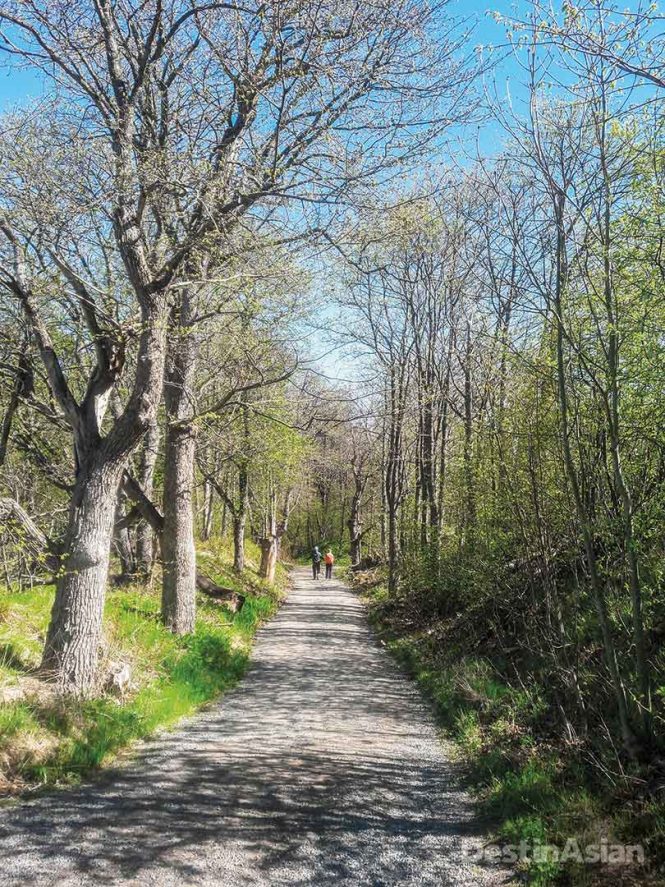
An avenue of old linden trees on Vallisaari.
Spend the rest of the afternoon exploring the Design District, a neighborhood association of galleries, shops, and cultural venues. One standout is the Design Museum, where you can admire everything from Elsa Arokallio chairs and Kaj Franck tableware to Fiskars scissors and thousands of other Finnish design objects.
Just a block away, SPIS (358-45/305-1211) is a tiny new-Nordic restaurant whose 18 seats belie an oversize culinary ambition. Impeccably paired with regional wines, the six-course seasonal tasting menu could include scallop on parsnip puree with lavender foam, wild parsley root with buckwheat sprouts and herbed mayo, and lamb shank ragout, each dish personally presented by one of the three chefs.
TURKU
A two-hour train ride west of Helsinki at the mouth of the Aura River, Turku (or Åbo in Swedish) is the oldest city in Finland, founded in the 13th century as the capital of what was then a province of Sweden. Having burned down multiple times over the centuries—most spectacularly in 1827—and suffered from thoughtless redevelopment in the 1960s through ’80s, there isn’t much to attract the heritage buff. But there is Turku Cathedral, a handsome Romanesque-Gothic monument first consecrated in 1300, and Turku Castle, one of the largest surviving medieval fortresses in Scandinavia. And for a glimpse of how lower-class Turku-ites lived back in the day when their city was built primarily of wood, visit the Luostarinmäki Handicrafts Museum, an entire neighborhood of 18th- and 19th-century timber houses done up with period furnishings.
Strolling along Turku’s tree-lined riverfront, you’ll find the city’s best hotel, the Radisson Blu Marina Palace (358-20/1234-4710; doubles from US$198), and any number of cheery sidewalk cafés. Definitely worth a visit is Aboa Vetus & Ars Nova, which occupies a baroque mansion and modern extension on the left bank of the Aura. True to its name, which means “Old Turku and New Art,” the museum combines a subterranean archeological site of medieval streets and artifacts unearthed during the construction of the extension in the 1990s, with an extensive collection of 20th-century art, including works by Picasso, Warhol, David Hockney, and Finnish surrealist Nikolai Lehto. Next Stop? Dinner at Restaurant Smör (358-2/536-9444), where seasonal Nordic dishes—cheese-and-asparagus tartlets, smoked rainbow trout in buttermilk sauce—are served in a vaulted stone cellar.
Nauvo and the Archipelago Sea
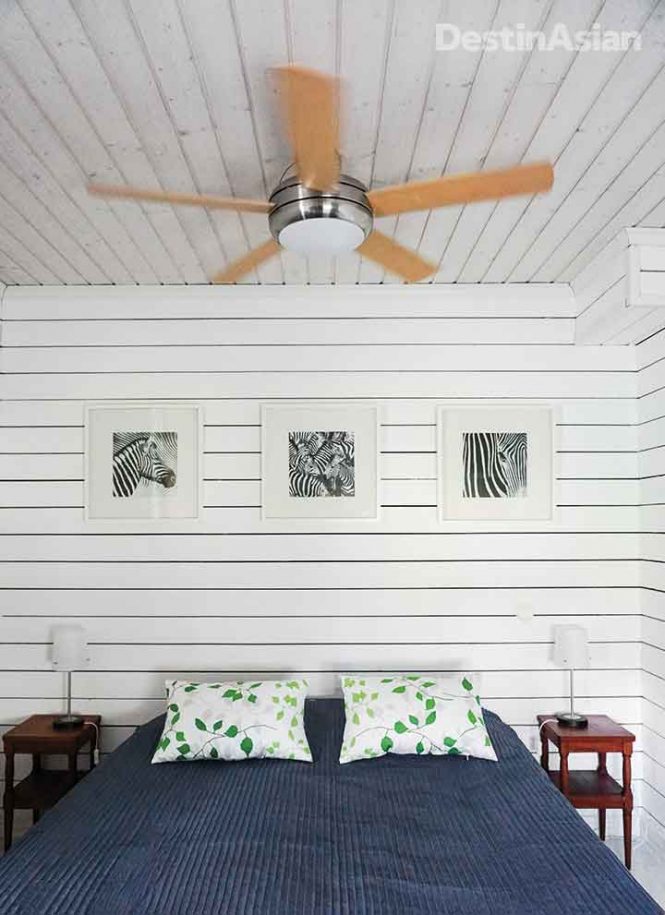
A room at Köpmans B&B in Nauvo.
Small and quiet it may be, but Turku is a veritable metropolis compared to Nauvo, the gateway to the thousands of islands and skerries in southwestern Finland’s Archipelago Sea. An 80-minute bus ride (including a brief ferry crossing) deposits you at Nauvo’s village center, just steps away from a new four-bedroom B&B called Köpmans (358-40/643-4430; doubles from US$142). Former lighting designer at Helsinki’s Finnish National Theatre Henri Talvitie and his wife Riitta make for charming hosts and can set you up with guides to explore the surrounding area. Options include an hour’s walk along a recently designated trail through wetlands and forest to the top of a granite rise crowned by a Bronze Age burial mound, to a biking tour of nearby Seili Island, a onetime leper colony and insane asylum turned heritage site and protected habitat for ospreys, seals, and other wildlife.
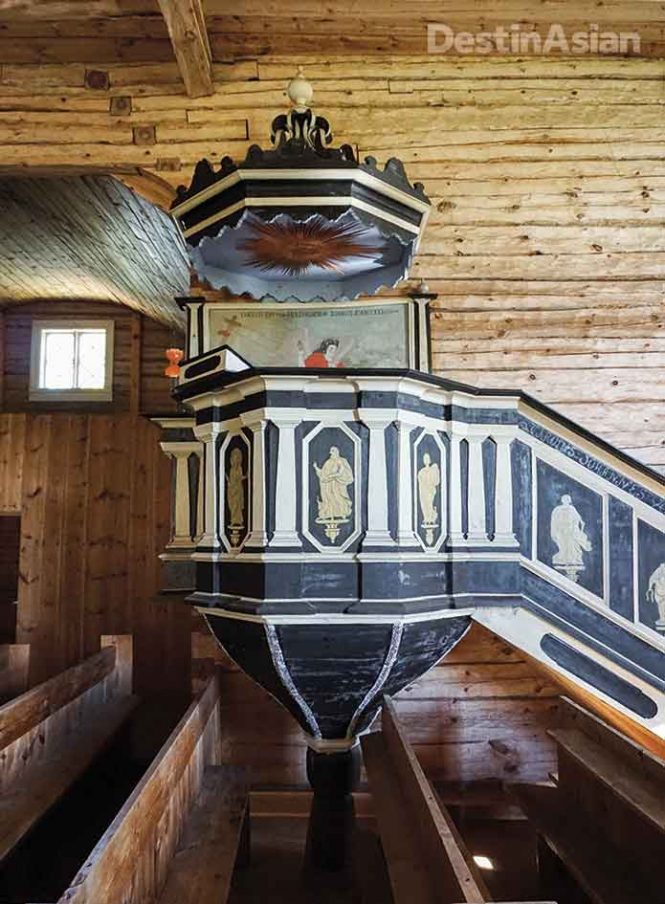
The pulpit of the wooden church on Seili Island
Back in Nauvo, the restaurant at Köpmans serves a mean pike burger on rye-and-malt bread, but a better bet for dinner is Restaurant L’Escale. Set in a former boathouse on the village’s yacht-filled harbor, it’s a hub of the island’s social scene come summer, with an impressive wine list and hearty archipelago cuisine prepared with a French twist; try the smoked-apple-glazed pork belly with lingonberry coleslaw. For a taste of laid-back island life, Finnish-style, it can’t be beat.
Getting There
From its Helsinki hub, Finnair flies to 15 cities in Asia, including Singapore, Bangkok, and Hong Kong. For information about stopover packages, visit finlandtours.fi.
This article originally appeared in the August/September 2017 print issue of DestinAsian magazine (“Finnish Fling”).

